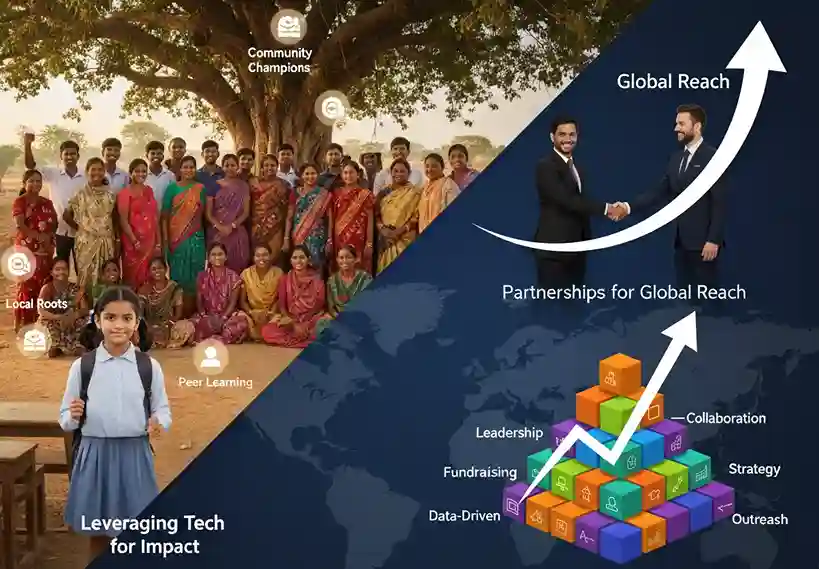Introduction
“Parental engagement is not a luxury—it’s a necessity, especially in underserved communities.”
In India and across the globe, underprivileged families face complex, systemic barriers to engaging in their children’s education. From financial struggles to language barriers, schools often miss the mark when it comes to inclusive family engagement in schools. But here’s the good news: when families are engaged, students thrive. This blog dives into 7 research-backed, real-world-tested strategies for Engaging Underprivileged Families in Education.
A Harvard study found that students with involved parents, regardless of income level, are more likely to earn higher grades and attend college. Yet, too often, our engagement strategies don’t meet underprivileged families where they are.
Let’s explore what truly works when empowering low-income parents in education.
7 Proven Strategies for Engaging Underprivileged Families in Education

1. Redefine Engagement: Focus on Relationships, Not Just Attendance
Too many schools equate parental involvement with attending PTMs or volunteering—activities often inaccessible to working-class or single parents. But engagement isn’t about presence; it’s about connection.
Practical Tip: Host virtual “home visits” or flexible meeting times to build trust with underprivileged families in schools.
“The principal called just to say Avni is doing great. I almost cried—no one’s ever done that,” said Meena, a mother of two from a low-income district in Gujarat.
2. Adopt Culturally Sensitive Communication
Cultural disconnect is one of the biggest barriers to effective outreach for low-income parents. Parents from marginalized backgrounds often feel judged or misunderstood in formal school settings.
Pro Tip: Hire community liaisons who speak the local language and understand the culture. Avoid jargon; speak with empathy, not authority.
Fact: Schools that employed bilingual cultural liaisons saw a 23% increase in parental meeting attendance.
3. Empower Parents Through Learning, Not Just Listening
One-way communication—like report cards and newsletters—keeps parents informed but not involved. Instead, offer training sessions on how to support children at home, especially for parents with limited formal education.
Real-World Example: NGOs like Unessa Foundation run community-based education programs to teach parents about child development, nutrition, and emotional support.
“Now I know how to help my daughter with her homework. Earlier, I didn’t even know what she was studying,” shared a parent from Unessa’s Delhi chapter.
4. Use Technology as a Bridge, Not a Barrier
Tech can be a game-changer for encouraging parental involvement in low-income school districts, if used wisely. Many parents have WhatsApp or simple smartphones, even if they lack internet literacy.
Tech Tip: Share updates via voice notes, videos, or local language texts. Create WhatsApp groups that include teachers, not just administrative staff.
Case Study: A rural school in Maharashtra used daily 2-minute audio updates and saw parent-teacher engagement rise by 40%.
For insights on effective NGO communication, see The Power of NGO Websites: Examples and Key Elements.
5. Make the School Feel Like Their Space Too
Often, low-income parents feel schools are not “for them.” Turn that around by creating welcoming school environments where everyone feels valued.
Strategy: Start with small gestures—family art walls, “parent of the month” shout-outs, community potlucks.
“For the first time, I felt seen. I wasn’t just the cleaning lady’s daughter’s mom—I was a part of the school,” said a parent from a Mumbai slum community.
Discover more about creating supportive environments in Creating a Supportive School Environment for Mental Health.
6. Strengthen School-Family Partnerships with Shared Goals
Create mutual accountability by involving parents in goal-setting, not just performance reviews. Co-create academic plans during parent-teacher conferences and track progress together.
Actionable Idea: Use family-school contracts outlining how both sides will support the child. Keep it visual and simple.
Schools with shared goal planning report a 50% increase in family engagement metrics.
7. Leverage Local Champions to Build Trust
Sometimes, the best way to reach families is through someone they already trust—local shopkeepers, faith leaders, or ex-students.
Field Strategy: Partner with community influencers who can advocate for education and demystify the system for skeptical or uninformed families.
“When our local tailor started praising the school, more parents showed up the next week,” reported a teacher from a slum-adjacent government school in Kolkata.
For tips on finding and supporting local NGOs, read How to Find and Support Local NGOs Near You.
Final Thoughts (From One Community Member to Another)
Engaging underprivileged families in education isn’t about fixing them—it’s about rethinking how schools engage. We must shift from telling parents what to do to inviting them into the process.
💛 Donate to Support Mental Health Programs 💛
Your donation helps us fund:
- Emotional health toolkits for classrooms
- Training sessions for teachers and caregivers
- Mental health workshops and counseling support
- Art and play therapy sessions for children in trauma
Even a small monthly contribution can fund mindfulness materials, journals, or wellness kits for multiple children.
Want to see how effective digital platforms can amplify NGO impact? Check out The Power of NGO Websites: Examples and Key Elements.



















